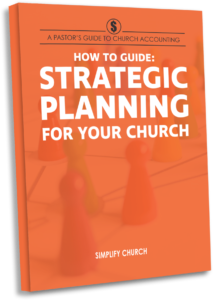What is your church focused on this December?
Hopefully you are focused on pointing people to Christ. But what does this look like practically speaking for churches in December? Often it involves a lot of time and energy spent on creating and promoting Christmas services.
What can sometimes get lost is the value of a creative, year-end giving campaign. It may seem a little off-putting to focus on raising money, rather than on Christ. But our focus is not on the amount of money coming in, rather than, a focus on what those donations allow us to do to impact more lives with the gospel.
How Will You Encourage Year-End Giving This Year?
If you have taken the time to create a mission and vision for your church, and establish your growth engines and goals, then you know it takes financial resources to accomplish that vision.
Encouraging giving at the end of a calendar year can help your church be able to execute that vision in the coming year. According to Donorbox.org, nonprofits bring in 47% of their online revenue the last week in December.
Just imagine how much more effective your church could be, just by intentionally creating a year-end giving campaign to inspire generosity at the end of the year.
Vision Casting For Your Church

Need help establishing your mission and vision, creating an annual planning process, identifying your growth engines, or prioritizing your spending this year? Download A Pastor's Guide to Strategic Planning For Your Church
Download FREE4 Creative Ways to Encourage Year-End Giving At Your Church
Here are four innovative ways to boost contributions at your church this December:
Interactive Giving Thermometer
Turn the act of giving into a visually engaging and interactive experience by introducing a giving thermometer. Set up a large display in a prominent area of the church or on your website, illustrating the financial goal for the year-end campaign.
As contributions come in, update the thermometer to reflect the progress. This real-time visual representation creates a sense of community achievement and encourages friendly competition to reach the target.
Year-End Giving Challenge
Transform giving into a game by introducing a friendly competition or challenge among church members. For example, set a collective giving goal and break it down into milestones.
As each milestone is reached, unlock special rewards or events for the entire congregation. This approach not only adds an element of excitement but also fosters a collaborative spirit among your church community.
Virtual "Gala of Gratitude"
Host a virtual event to express gratitude for the generosity of your congregation throughout the year. Create an online gala or celebration where you share stories of impact, highlight key achievements, and recognize the efforts of your church community.
During the event, encourage additional year-end contributions by showcasing specific needs or projects that require support. Consider incorporating live testimonials, musical performances, and other entertaining elements to make it a memorable and enjoyable experience.
Personalized Year-End Giving Stories
Harness the power of personal connection by featuring individual giving stories within your congregation. Invite members to share their reasons for giving, the impact they’ve witnessed, or how their contributions have made a difference in their lives.
This could be done through written testimonials, video interviews, or even live storytelling during services. Personal narratives create a relatable and emotional connection, motivating others to contribute towards the shared vision and mission of the church.
How Will You Encourage Year-End Giving This Year?
Encouraging year-end giving at your church doesn’t have to follow a one-size-fits-all approach. By embracing creativity and innovation, you can make the giving experience interactive, exciting, and meaningful for your congregation.
Whether through visual displays, friendly challenges, virtual celebrations, or personal stories, these creative strategies can infuse new energy into your year-end giving campaign and strengthen the culture of generosity within your church community.
Remember, the key is to make giving a joyful and rewarding experience that encourages generosity and reminds your congregation of why those donations matter.
Looking for a simple way to effectively increase online giving?
You don’t need an expensive giving platform with fancy bells and whistles. You need an affordable, user-friendly solution that makes online giving simple and convenient. Start using Simplify Give today.



















